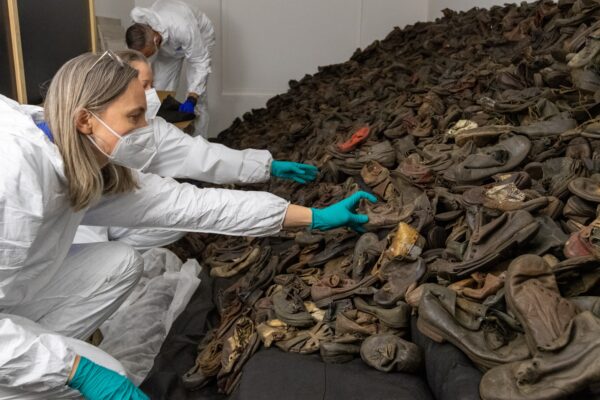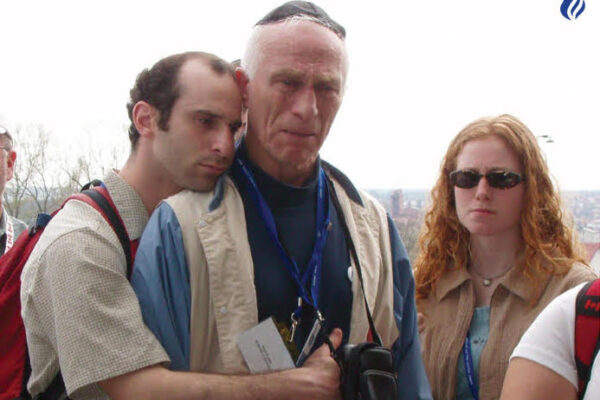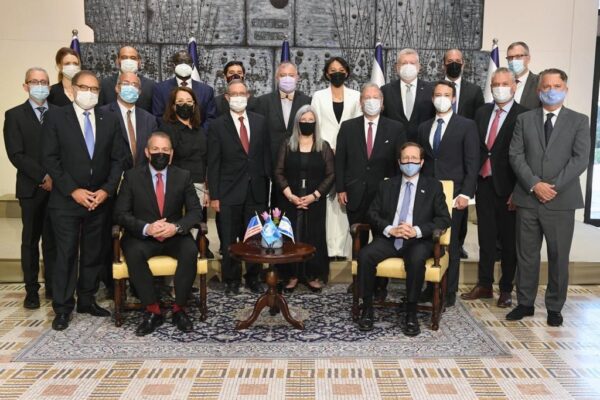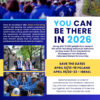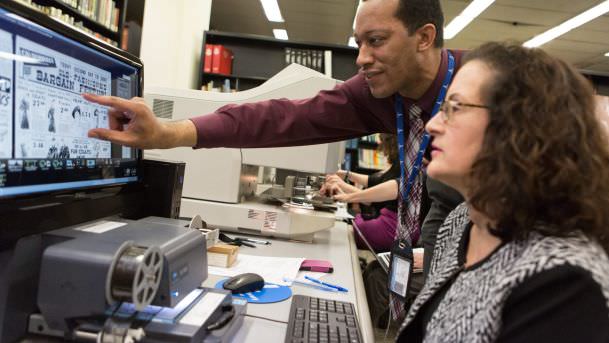
The same week the Dachau concentration camp opened, Maine’s Bangor Daily News also had some good tidings for its readers. “Mistreatment of Jewish Race in Germany Ends” was the headline of a story that ran on its front page in March 1933.
Not all coverage of events leading up to the Holocaust was as misguided, misleading or downright false, but more than 80 years later questions still linger about how much Americans knew and how vigilantly the press fulfilled its responsibility to inform them about the catastrophe unfolding in Europe.
With the help of crowdsourcing, the United States Holocaust Memorial Museum is now trying to find some answers. “History Unfolded: U.S. Newspapers and the Holocaust” uses citizen historians — mainly high-school students — to explore what American newspapers were reporting about the Holocaust while it was happening. The newly launched project invites Americans — both classroom students and lifelong learners — to visit their local libraries, scour their hometown newspapers from that era, in whatever form they’re available, and submit relevant articles to a centralized database at the museum.
To narrow the search, the museum is focusing on 12 specific events spanning from 1933 through 1945. These include the opening of Dachau, the first concentration camp in Germany; Hitler’s announcement of the Nuremberg race laws; the first public reports of the “extermination camp” at Auschwitz, the Warsaw Ghetto Revolt and the deportation of Hungarian Jews.
“We’re trying to get people from around the country to find those papers we don’t have access to, small local newspapers, college newspapers, many of which haven’t been digitized or even microfilmed,” says Elissa Frankle, the digital projects coordinator at the museum. “That’s what makes this a real citizens’ history project.”
The findings are meant to feed into a museum exhibit on Americans and the Holocaust that is scheduled to open in the spring of 2018.
The only U.S. newspaper from which submissions for the project are not accepted is The New York Times. “That story’s already been well-researched,” explains Frankle. “We already know what the Times had to say. That’s the low-hanging fruit. What we don’t know is what the smaller newspapers had to say, what people in small towns were reading at the time. That’s the story we’re trying to tell, not the big national story.”
Among the roughly 1,000 submissions the project has already received is a page-2 story in the Fredericksburg, Virginia Free Lance-Star from March 23, 1933. Its headline announced a “Sympathy Service by Friends of Jews” scheduled at a local church.
But not all Americans were feeling kindly toward Jews in those years. In a letter to the editor published in Washington’s Evening Star in July 1939, a reader expressed support for the failure of the Congress to pass a bill to admit to the United States 20,000 German-Jewish refugee children beyond the immigration quota numbers.
“The 20,000 refugee children should be absorbed by countries that have practically no unemployment and but few Jews, and not by the United States that has already done for this minority than all the other countries combined,” the letter said.
A little more than three years later, as a page-8 story in the Dallas Morning News reveals, the powers that be in America were experiencing a change of heart. “U.S. Pledges Punishment of Jew Killers” was the headline of that story from December 1942.
Frankle cautions against making assumptions about what Americans knew based on what was being reported in the press. “There’s a difference between what they knew and what was available for them to know,” she says. “So while things may have shown up in newspapers, even on the front pages, it’s difficult to know what it was they were really reading and ingesting at the time. All this project can do is tell us what they had the opportunity to know.”
Her goals are quite ambitious. Over the next two years, Frankle says she hopes to engage about 20 percent of all American high-school history students in the project. “We’re talking about 240,000 students potentially, and that’s huge,” she says. “We’ve never done anything like that before.” Her other goal is to get 50 percent of the local libraries in the United States involved in the project.
Frankle had assumed her main challenge would be teaching young Americans, who grew up in the digital age, how to use an archaic medium like microfilm. She hadn’t anticipated it would be even more basic than that. “Not only don’t most high-school students these days know how to do a search outside of Google, many of them have never read a newspaper before,” she relates. “So we had to develop special tutorials on how to read old newspapers.”
How does she measure success in a project like this? “If I can get one submission from each state for each of the 20 events on our lists, spread out that way,” says Frankle, “I would be a happy person.”
Originally published HERE
